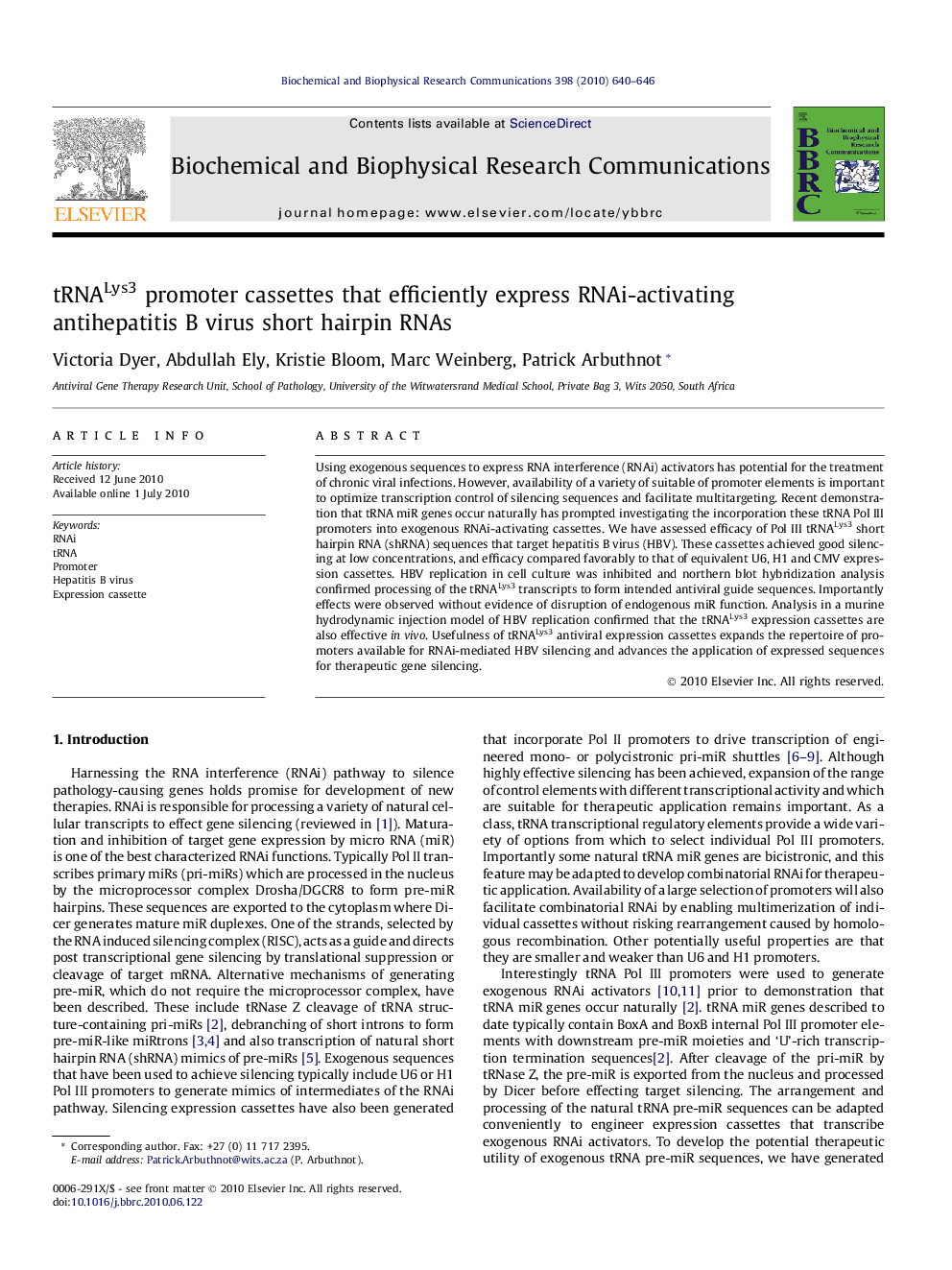| Article ID | Journal | Published Year | Pages | File Type |
|---|---|---|---|---|
| 1931511 | Biochemical and Biophysical Research Communications | 2010 | 7 Pages |
Using exogenous sequences to express RNA interference (RNAi) activators has potential for the treatment of chronic viral infections. However, availability of a variety of suitable of promoter elements is important to optimize transcription control of silencing sequences and facilitate multitargeting. Recent demonstration that tRNA miR genes occur naturally has prompted investigating the incorporation these tRNA Pol III promoters into exogenous RNAi-activating cassettes. We have assessed efficacy of Pol III tRNALys3 short hairpin RNA (shRNA) sequences that target hepatitis B virus (HBV). These cassettes achieved good silencing at low concentrations, and efficacy compared favorably to that of equivalent U6, H1 and CMV expression cassettes. HBV replication in cell culture was inhibited and northern blot hybridization analysis confirmed processing of the tRNALys3 transcripts to form intended antiviral guide sequences. Importantly effects were observed without evidence of disruption of endogenous miR function. Analysis in a murine hydrodynamic injection model of HBV replication confirmed that the tRNALys3 expression cassettes are also effective in vivo. Usefulness of tRNALys3 antiviral expression cassettes expands the repertoire of promoters available for RNAi-mediated HBV silencing and advances the application of expressed sequences for therapeutic gene silencing.
Research highlights► tRNALys3 Pol III promoter cassettes activate RNAi-mediated silencing of HBV. ► Intended RNAi-activating guide sequences formed from tRNALys3 transcripts. ► Effective silencing that compared favorably to other Pol II/III cassettes. ► Endogenous miR-16 function was not disrupted. ► First demonstration that tRNALys3 shRNA expression cassettes are effective in vivo.
